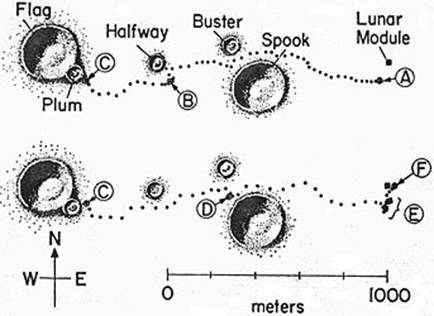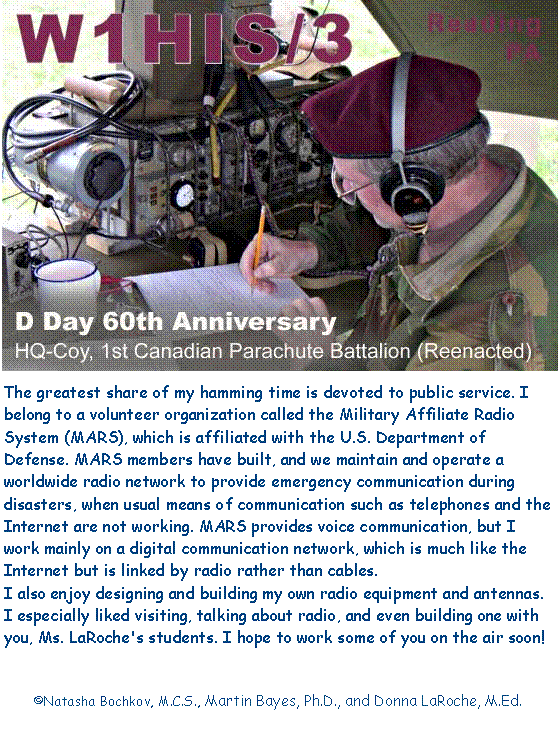|
My lunar work (see map above) led naturally to similar work involving other things in the sky, and ultimately to inventing ways to determining positions of things here on Earth(!) more accurately than ever. I've received about 30 patents for my inventions in this area. Probably every Global Positioning System (GPS) receiver that you've seen embodies some of these inventions, and was made under licenses from some of these patents.
That's my professional work, in other words my job. Ham radio is my hobby. As a ham I like "working DX," which is hamspeak for contacting other hams in far-away and exotic places. I enjoy "working" them, and I also enjoy exchanging QSL cards with them later.
Another aspect of ham radio that I enjoy is restoring and operating World War II vintage army radio or "wireless" sets. Through this activity I have learned much about the War and the many brave men and women who fought in it. As a member of a "living history" group known as the 1st Canadian Parachute Battalion (Reenacted), I play the role of a WW II wireless operator in shows -- like plays -- where we demonstrate how the War was fought. Here is a photo of me playing WW II wireless operator: |


|
During the Apollo mission to the moon in April 1972, when the astronauts were driving around the moon in a little electric car called the Lunar Rover, they got confused. They thought they were at one crater, but really they were at a different crater. (There are no roads or signs on the moon!) However, back on Earth, by measuring radio signals received from their car on the moon, I knew exactly where they were. (For a few minutes I was the only person anywhere who knew where they were.) Here is a copy of the map I made then showing where they were, and where they had been. Dots show their positions every 20 seconds throughout their drive. The circled letters A, B, ..., show places where they stopped. (When they stopped at B, they thought they'd reached C.) |